Blogs

Understanding Nickel Beryllium: A Comprehensive Tutorial on Properties and Uses
Introduction
In the realm of advanced materials, nickel beryllium stands out as a high-performance alloy that combines exceptional strength, ductility, and thermal conductivity. Its unique properties make it an integral component across diverse industries, from automotive to aerospace, where reliability and precision are paramount.
As procurement managers seek to optimize their sourcing strategies, understanding the fundamental characteristics and applications of nickel beryllium becomes crucial. This article delves into the alloy’s mechanical properties, compliance with safety standards, and the evolving market landscape, providing valuable insights for professionals navigating the complexities of material procurement.
By exploring the challenges and future trends associated with nickel beryllium, stakeholders can better position themselves to leverage this versatile material in their operations.
Fundamental Properties of Nickel Beryllium
Nickel beryllium is acknowledged as a high-performance alloy, distinguished by its remarkable mechanical properties. This nickel beryllium alloy exhibits superior strength and ductility, along with excellent thermal conductivity, making it an ideal material for rigorous uses. The chemical makeup, primarily consisting of metals like nickel beryllium, provides outstanding resistance to corrosion, which is essential when operating in severe conditions.
Significantly, nickel beryllium retains its mechanical characteristics over a wide temperature spectrum, thereby aiding uses that undergo considerable thermal cycling. Furthermore, its low thermal expansion coefficient enhances stability, particularly in precision applications where dimensional accuracy is paramount. Nickel alloy is available in wire/bar diameters up to 2.50 inches, offering versatility for various manufacturing needs.
Recent advancements in research highlight the mechanical properties of nickel beryllium, revealing that this metal alloy excels in environments requiring both strength and reliability. The case study on tin plating of copper busbars illustrates the increasing demand for conductive coatings, particularly in the context of electrification of vehicles and the internet of things. As noted by Advanced Plating Technologies, “Electroless and electrolytic coatings are essential in the automotive market,” demonstrating the alloy’s critical role in protecting components from corrosion.
In addition to nickel, DOMADIA Copper complies with international standards such as UNS and ASTM, ensuring quality and reliability. This copper alloy, which includes nickel beryllium alongside copper with a beryllium content typically ranging from 0.2% to 2.0%, offers superior corrosion resistance, excellent mechanical properties, high-temperature stability, and precision manufacturing. Its uses span from electrical connectors to aerospace components, making it suitable for various demanding purposes.
Furthermore, Non-Sparking Tools are a crucial substitute for non-sparking uses in explosive environments, emphasizing the significance of material selection in safety-critical scenarios. Comprehending these essential characteristics enables purchasing managers to evaluate the appropriateness of copper alloys for diverse uses, ensuring optimal performance and dependability in final products.
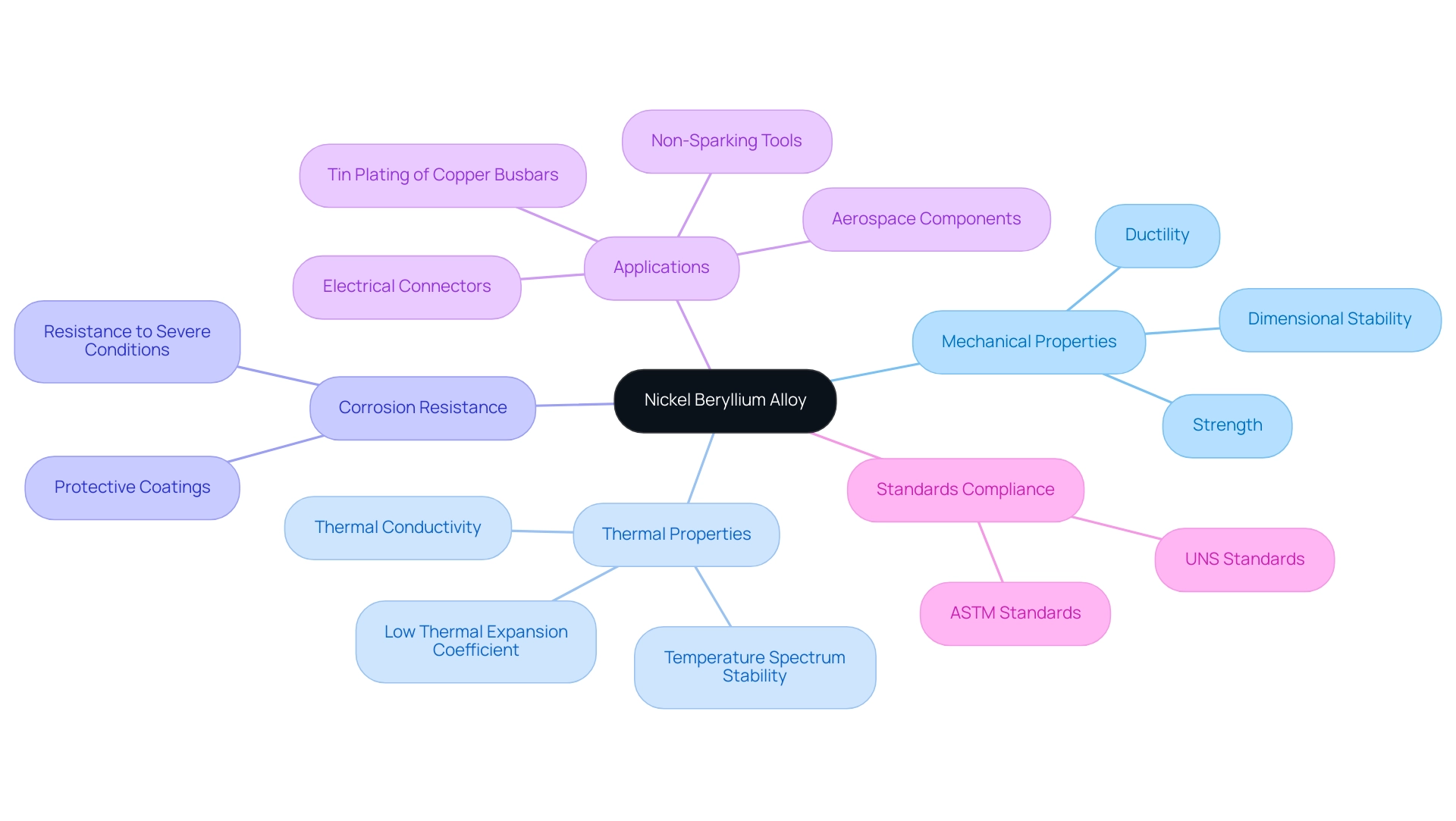
Applications of Nickel Beryllium Across Industries
Nickel finds applications across multiple industries, primarily due to its unique combination of strength and conductivity. In the automotive sector, it is used in high-performance components such as valve springs and electrical contacts due to its excellent fatigue resistance. In electronics, alloys containing copper and other metals are preferred for connectors and switches that necessitate both durability and conductivity.
In the medical field, nickel beryllium is utilized for surgical instruments and devices where precision and reliability are paramount. Furthermore, Beryllium Copper, particularly Alloy 25 (CuBe2, C17200), emerges as a strong contender in aerospace fields, known for its exceptional mechanical strength, electrical conductivity, and fatigue resistance. Beryllium Copper is characterized by its unique blend of strength, conductivity, and corrosion resistance, rendering it essential in various industrial uses since its development in the 1940s.
Furthermore, Non-Sparking Tools are essential in explosive settings, offering safe alternatives for non-sparking uses. Grasping these varied applications enables sourcing managers to align their acquisition strategies with market needs and technological progress while considering high-performance materials such as copper alloys and nickel.
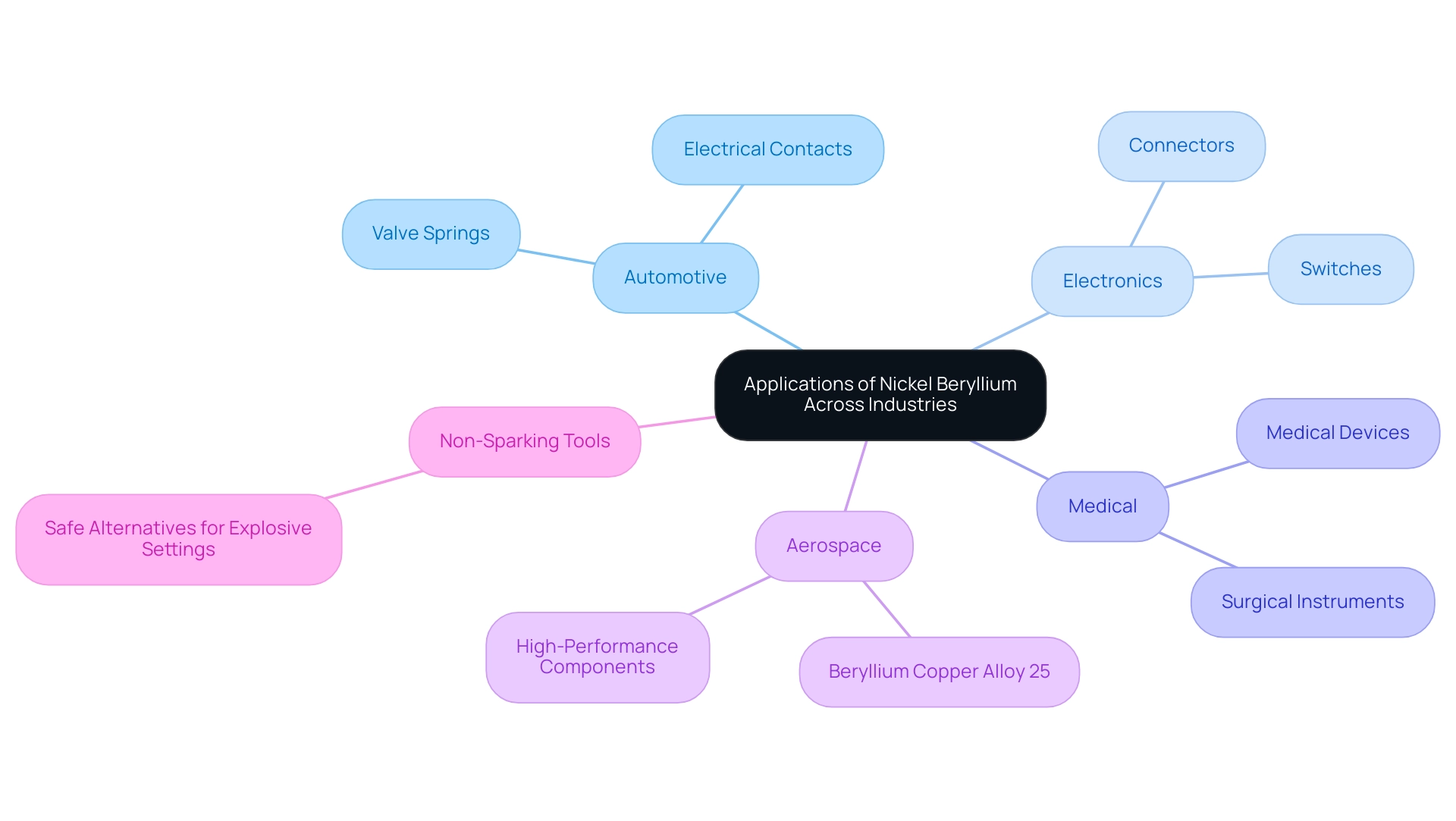
Nickel Beryllium’s Compliance and Safety Standards
Because of the dangerous characteristics of this material under certain conditions, nickel beryllium is regulated by essential compliance and safety standards. For procurement managers, it is essential to navigate international regulations such as:
- RoHS (Restriction of Hazardous Substances)
- REACH (Registration, Evaluation, Authorisation and Restriction of Chemicals)
These frameworks set forth guidelines for the safe management, use, and disposal of a specific metal alloy, emphasizing the necessity for strict adherence to reduce regulatory risks.
Recent updates on compliance standards for certain metals in 2024 necessitate a proactive approach to supplier management and adherence to safety protocols. Furthermore, the implications of Executive Order 14068 highlight the importance of compliance in international trade, particularly concerning the prohibition of certain goods from the Russian Federation, which can affect supply chains. As stated by OFAC, these prohibitions underscore the necessity of adhering to compliance standards to avoid significant legal and financial repercussions.
For instance, the Global Magnitsky General License 2A case study illustrates the serious consequences of non-compliance, as U.S. persons must cease transactions with blocked entities to avoid penalties. Recent statistics suggest that non-compliance can result in harmful consequences, emphasizing the urgency for purchasing professionals to be well-versed in these standards. Adherence to safety regulations is non-negotiable in today’s market, where the consequences of oversight can be severe.
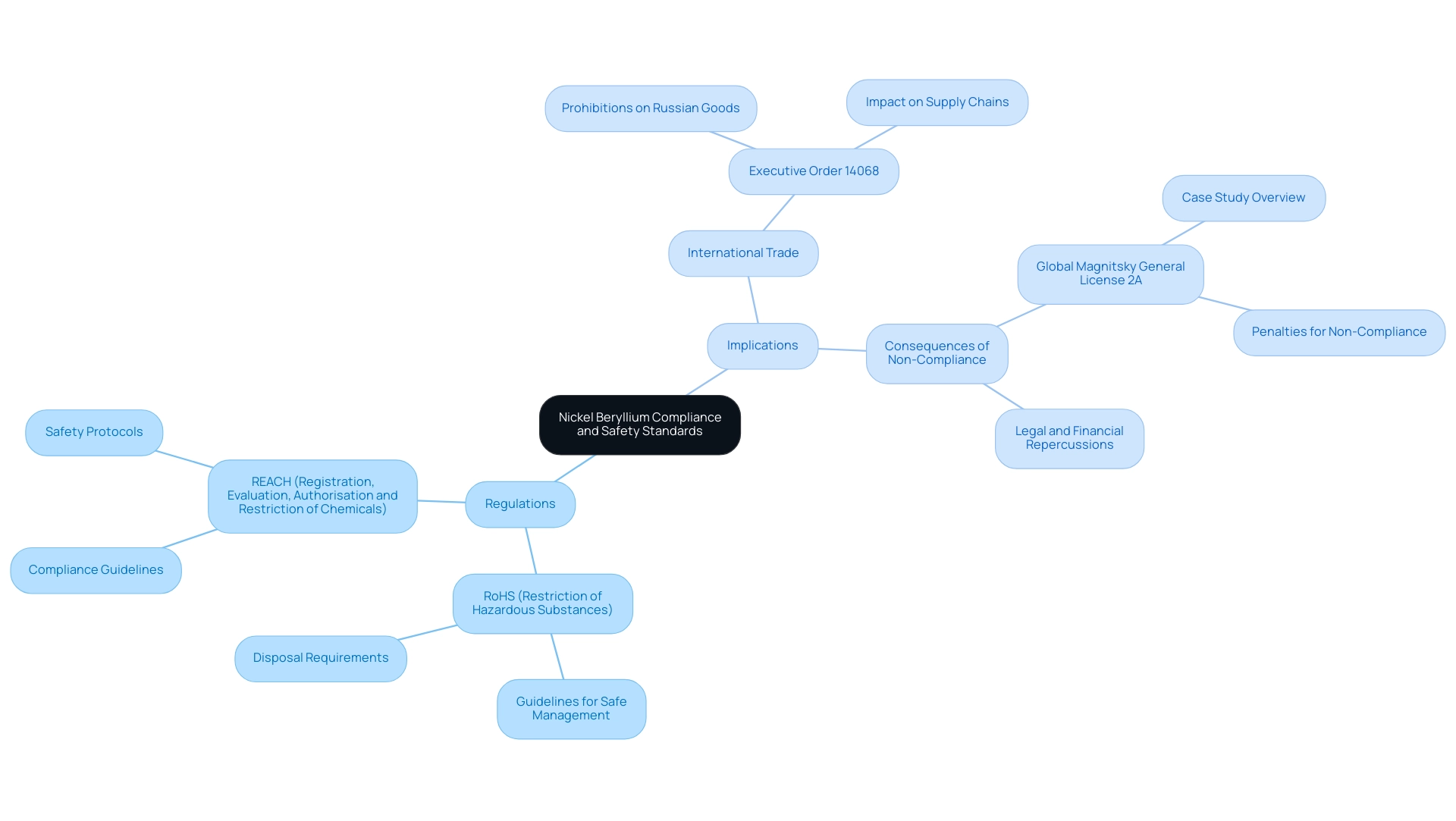
Sourcing Strategies for Nickel Beryllium
For purchasing managers sourcing beryllium, forming long-term alliances with trustworthy suppliers, like Domadia, is essential for guaranteeing consistent quality and reliability. Domadia’s unparalleled quality assurance and extensive industry experience position it as a leading supplier of pure metal, providing a diverse range of products tailored to specific application needs. Our clients have praised us for our commitment to excellence, with testimonials highlighting the reliability and quality of our products.
A robust supplier evaluation process is fundamental, encompassing detailed assessments of production practices and adherence to industry standards, such as ISO 9001 and AS9100 certifications, exemplified by industry leaders like Wieland Concast. By focusing on suppliers like Domadia, who prioritize quality management and continuous improvement, purchasing professionals can enhance their supply chain integrity. Furthermore, comprehending technical specifications, such as the hot treatment minimum temperature of 1200 °F and maximum of 1600 °F, is crucial for the efficient acquisition of a specific metal.
Employing effective negotiation techniques can also yield favorable pricing and terms, which is essential in a market characterized by fluctuations in material costs. Compared to competitors, Domadia offers competitive pricing that reflects our commitment to fair and transparent transactions. Our pricing approach is designed to ensure purchasing managers stay informed about market trends and pricing statistics, empowering them to make strategic sourcing decisions that bolster their competitive edge.
By implementing these proactive supplier management strategies, procurement professionals can ensure a dependable and high-quality supply of the metal.
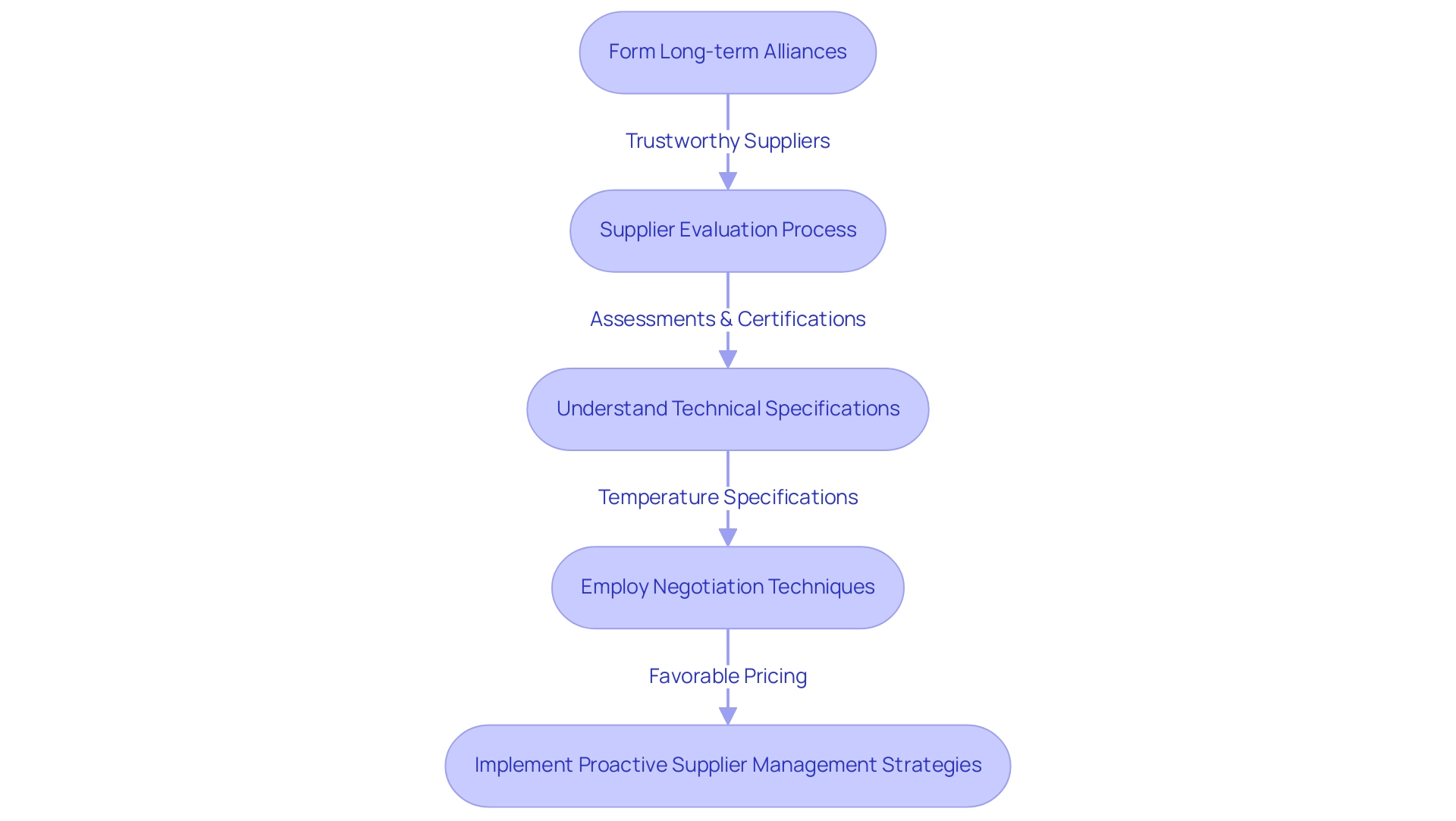
Future Trends in Nickel Beryllium Use
The expected increase in demand for metal alloys is mainly fueled by sectors seeking high-performance materials designed for advanced uses. In particular, the rise of electric vehicles and renewable energy systems provides significant new opportunities for the use of certain metals, especially in components that require superior thermal conductivity and mechanical strength. A case study titled ‘The Role of Etching in Electric Vehicle Parts Manufacturing’ emphasizes the critical role of photochemical etching in producing EV components, showcasing how a specific metal can enhance performance in these uses.
Moreover, as safety becomes progressively vital in explosive settings, the incorporation of Non-Sparking Tools, which employ a specific alloy, is essential. Additionally, advancements in medical technology are poised to increase the utilization of nickel beryllium in precision instruments, complementing the application of DOMADIA Oxygen Free Copper (OFE/OHFC) for critical medical components. With these emerging trends, purchasing managers must closely monitor developments within these sectors and adapt their sourcing strategies accordingly.
By doing so, they can effectively leverage new market opportunities and maintain a competitive edge in an ever-evolving landscape. For additional inquiries and sample requests, Fisk Alloy offers a contact form that can act as a useful tool for managers in charge of acquiring resources.
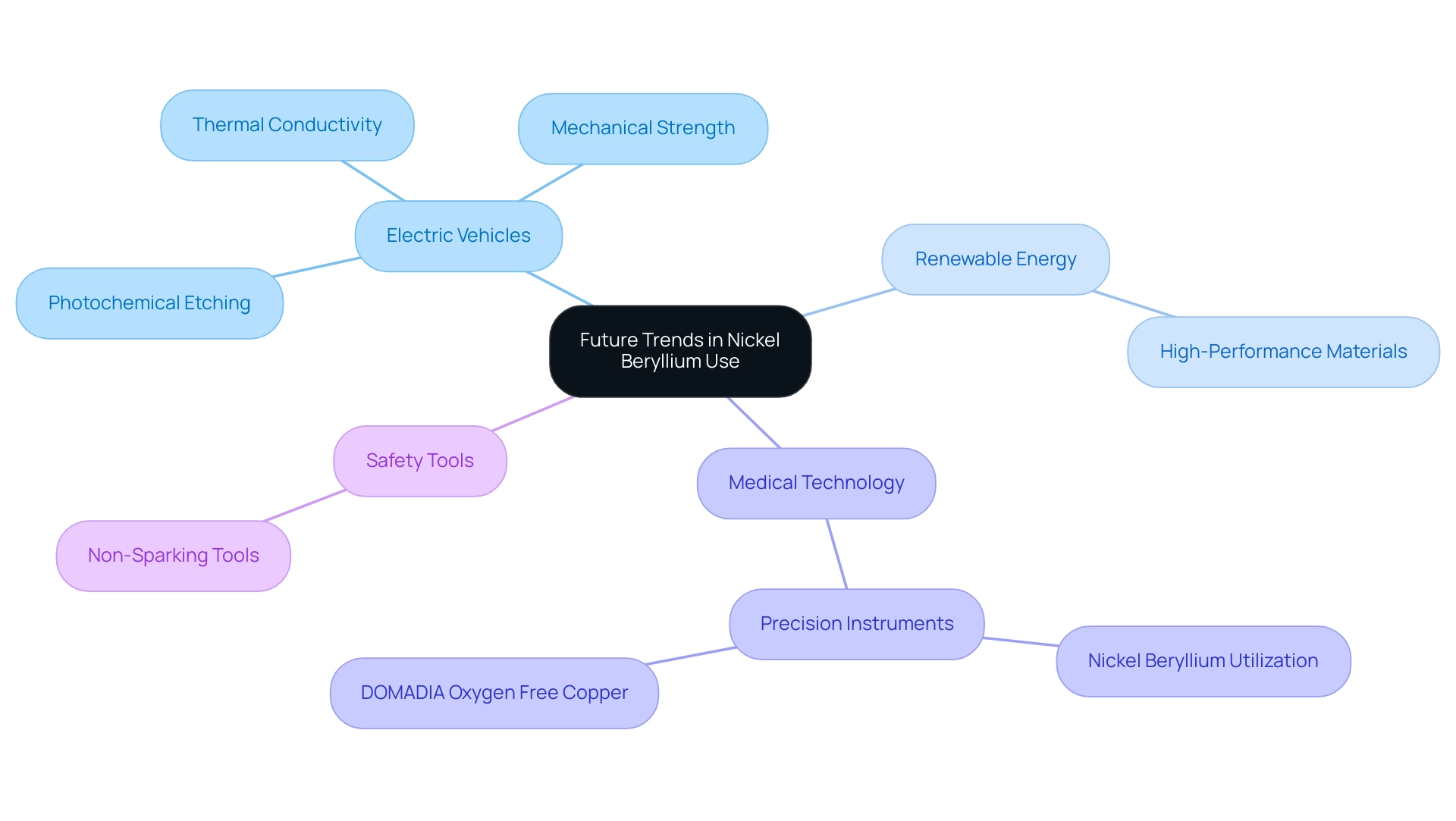
Challenges in Sourcing Nickel Beryllium
Sourcing nickel beryllium presents distinct challenges that purchasing managers must navigate adeptly, particularly given the limited number of suppliers offering high-quality materials. The market for nickel beryllium is characterized by significant volatility, with fluctuations in prices directly impacting budgeting and forecasting processes. For instance, Beryllium Copper Strips are available at competitive pricing, typically around $1,050.00 for specific quantities, with larger orders reaching approximately $15,500.
This pricing structure exemplifies the need for purchasing professionals to remain vigilant about inventory levels and supplier capabilities. Companies like Century Spring offer rapid turnaround, shipping, and delivery on a vast inventory of over 40,000 in-stock designs, making them a valuable partner in ensuring material availability. To effectively mitigate sourcing challenges, purchasing professionals are encouraged to diversify their supplier base, including manufacturers of electrical insulation papers, fabrics, and metals such as:
- Kapton tapes
- PTFE coated yarns
- High-temperature fabrics
Developing robust contingency plans is essential for guaranteeing a reliable supply of materials. Regular market analysis is vital, empowering procurement managers to anticipate price fluctuations and adjust their strategies proactively. Additionally, understanding supplier dynamics is crucial in maintaining operational continuity amidst market unpredictability.
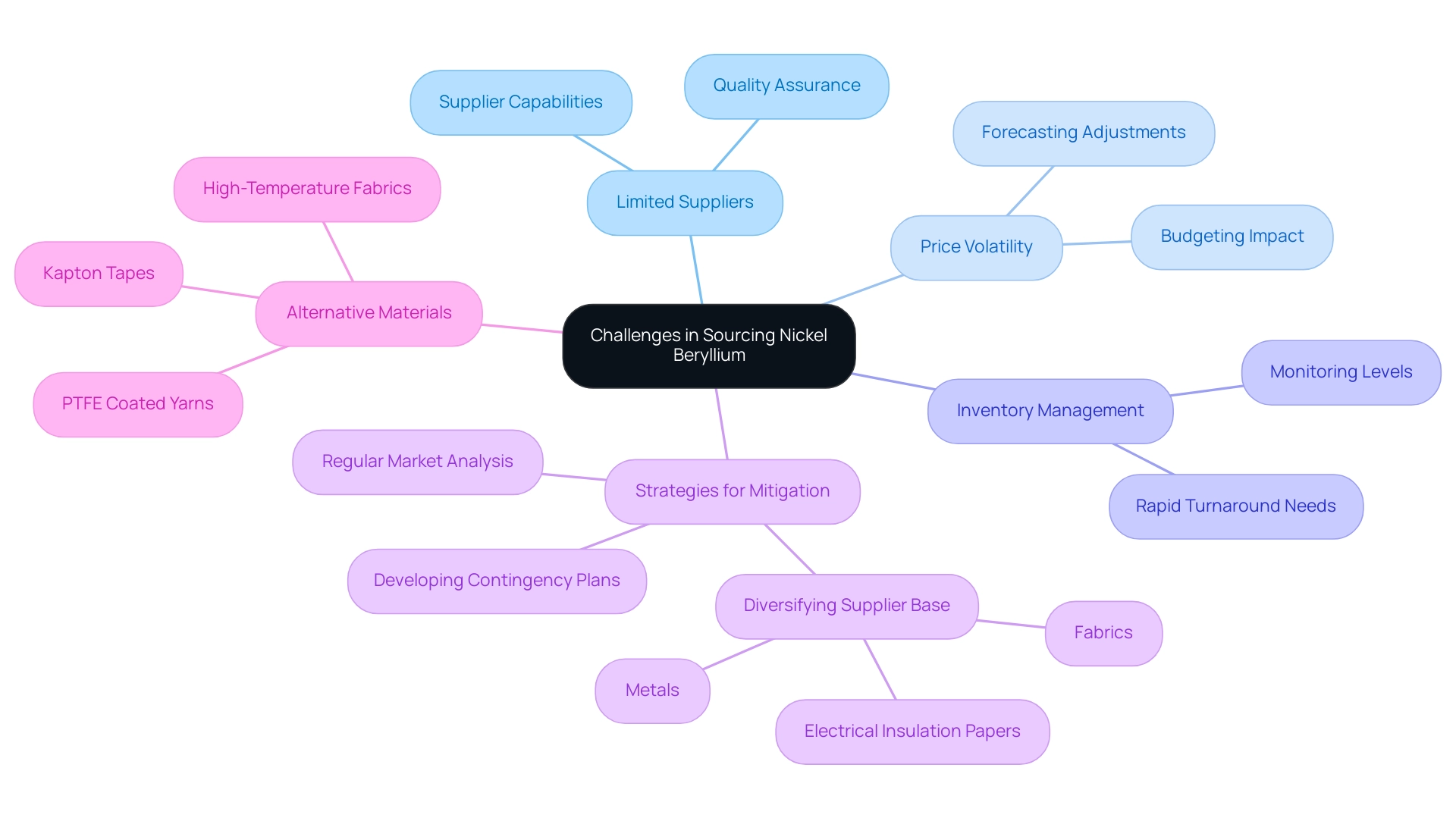
Conclusion
Nickel beryllium’s exceptional properties and diverse applications position it as a vital material across various industries. Its remarkable strength, ductility, and thermal conductivity make it an ideal choice for critical components in the automotive, electronics, and medical sectors. The alloy not only meets rigorous performance standards but also complies with essential safety regulations, ensuring reliability in even the most demanding environments.
As procurement managers evaluate their sourcing strategies, it is essential to recognize the challenges posed by market volatility and the limited number of high-quality suppliers. Establishing strong partnerships with reputable suppliers and employing effective negotiation techniques can mitigate these issues and secure a consistent supply of nickel beryllium. Understanding the evolving landscape of compliance and safety standards further empowers procurement professionals to navigate regulatory complexities with confidence.
Looking ahead, the increasing demand for nickel beryllium, particularly within the electric vehicle and renewable energy sectors, underscores the need for proactive sourcing strategies. By staying informed about market trends and potential applications, procurement managers can capitalize on emerging opportunities and enhance their competitive edge. In an industry where precision and performance are paramount, leveraging the unique attributes of nickel beryllium will be crucial for driving innovation and success in future projects.




